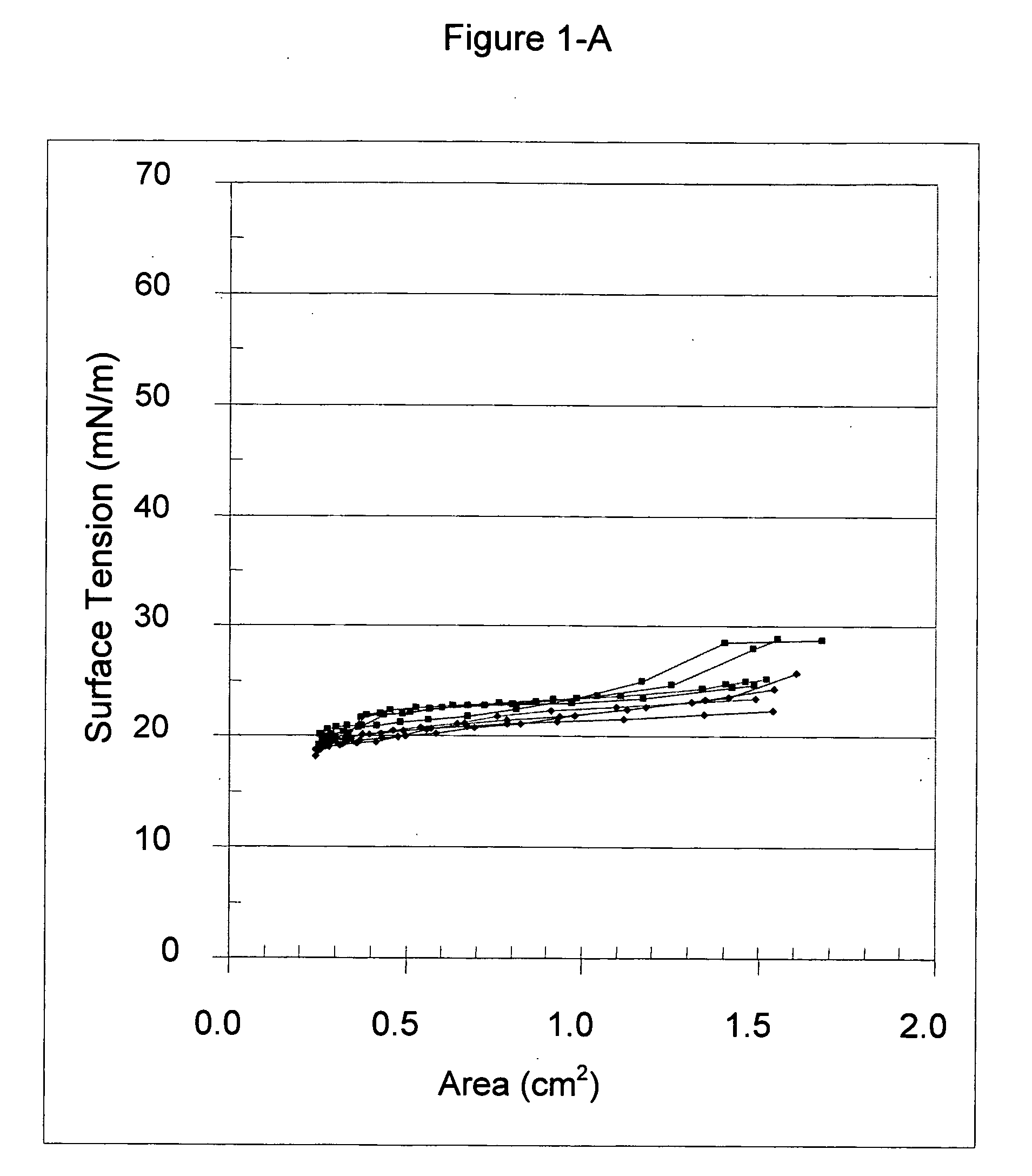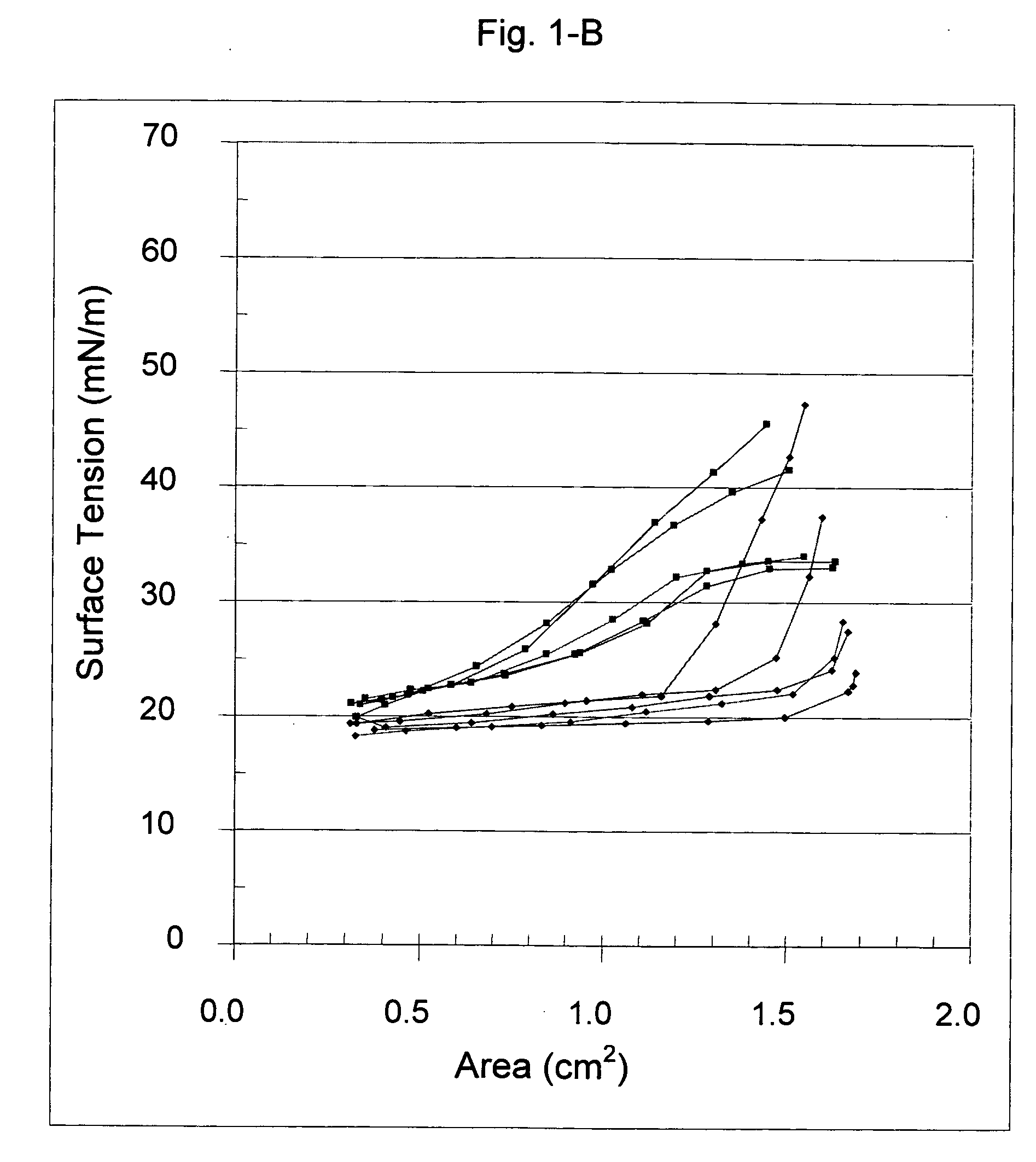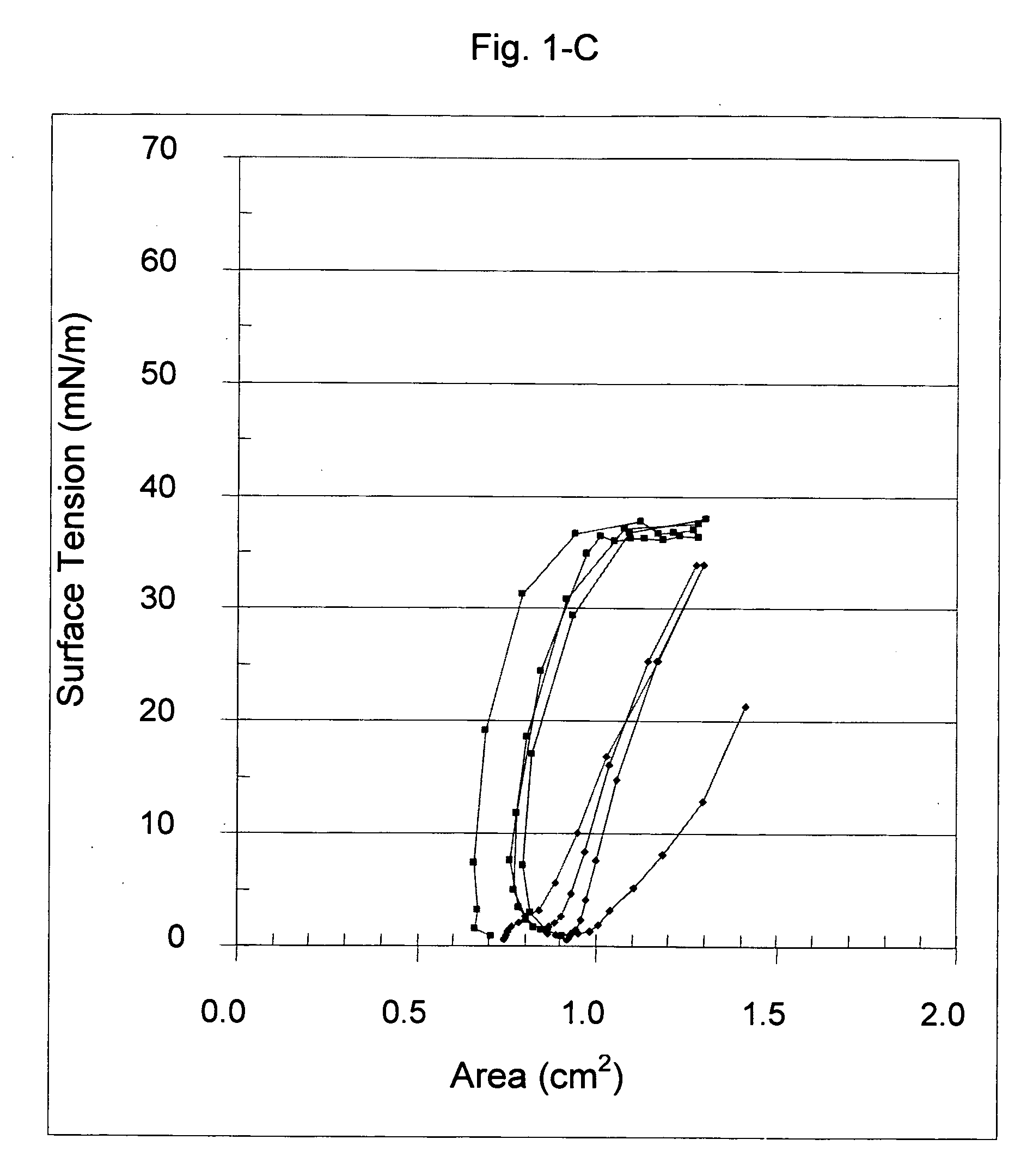Treatment of surfactants
a surfactant and surface tension technology, applied in the field of surfactant treatment, can solve the problems of respiratory distress syndrome, high cost of animal preparations, and high risk of transmitting infectious diseases, and achieve the effects of enhancing surfactants, enhancing surfactants, and improving surface tension of inhibited surfactants
- Summary
- Abstract
- Description
- Claims
- Application Information
AI Technical Summary
Benefits of technology
Problems solved by technology
Method used
Image
Examples
example 1
[0062]In a model study, 20 weight percent cholesterol was added to a cattle lipid surfactant extract in order to obtain an example of a surfactant charged with and / or inhibited by cholesterol; the function of the surfactant model was determined in a captive bubble surfactometer (CBS).
[0063]In the absence of methyl-β-cyclodextrin (MβCD), i.e. with unenhanced surfactant, the surface tension remained nearly unchanged near the equilibrium at 23 10−3N / m if the boundary surface or interface was reduced, whereby the surfactant is inhibited in a function.
[0064]In the presence of methyl-β-cyclodextrin (MβCD) (20 mmol), i.e. with enhanced surfactant, in the aqueous phase the surfactant regained its normal function and the surface tension receded to almost zero.
example 2
[0065]In the study with specimens from CF patients, surfactants obtained by means of bronchoalveolar lavage (BAL) were also examined with the captive bubble surfactometer (CBS).
[0066]In the absence of methyl-β-cyclodextrin (MβCD), the surface tension remained near the equilibrium (23 10−3N / m) if the boundary surface or interface was reduced.
[0067]In the presence of methyl-β-cyclodextrin (MβCD) (20 mMol) in the aqueous phase, the surfactant recovered its function almost entirely or completely. After three hours in the presence of methyl-β-cyclodextrin, the films reduce their surface tensions almost to zero to an area reduction in a normal manner.
[0068]Furthermore, in FIG. 1 measurements of surface tensions are shown for ranges of surfactants which were obtained from a bronchoalveolar fluid of a CF patient (cystic fibrosis patient) in a captive bubble surfactometer (CBS).
[0069]The left side of FIG. 1 shows four slow compression / expansion cycles (A and C). On the right side, cycles (B ...
PUM
| Property | Measurement | Unit |
|---|---|---|
| Surface tension | aaaaa | aaaaa |
| Selectivity | aaaaa | aaaaa |
Abstract
Description
Claims
Application Information
 Login to View More
Login to View More - R&D
- Intellectual Property
- Life Sciences
- Materials
- Tech Scout
- Unparalleled Data Quality
- Higher Quality Content
- 60% Fewer Hallucinations
Browse by: Latest US Patents, China's latest patents, Technical Efficacy Thesaurus, Application Domain, Technology Topic, Popular Technical Reports.
© 2025 PatSnap. All rights reserved.Legal|Privacy policy|Modern Slavery Act Transparency Statement|Sitemap|About US| Contact US: help@patsnap.com



